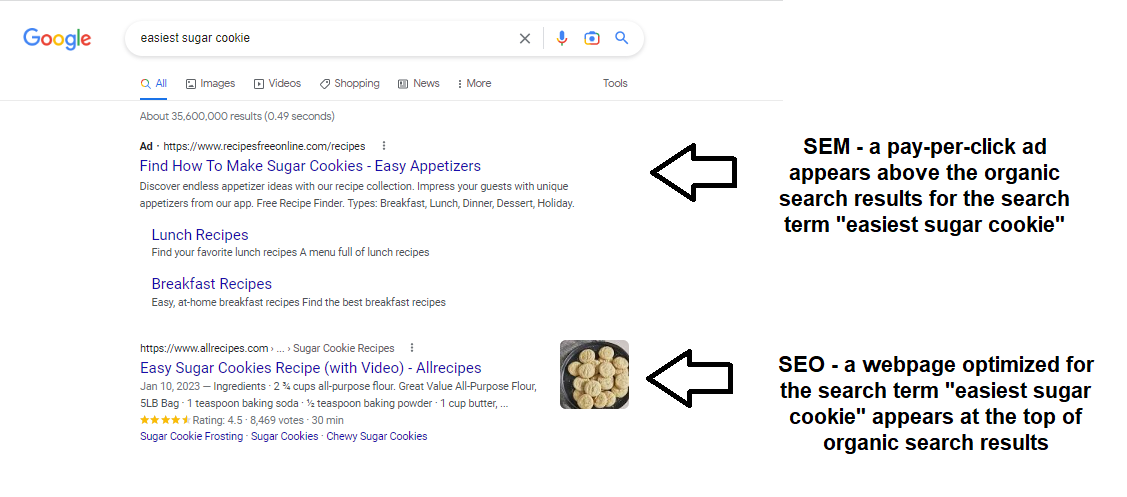Today’s post is a discussion of the application of SEO and SEM principles to the marketing of trade events. You’ll get a peek behind-the-screen to see how CSG harnesses the power of search engines to give our clients the most exposure possible.
To refresh – SEO (search engine optimization) and SEM (search engine marketing) are the unpaid and paid techniques, respectively, of using search engines to reach your audience.
SEO entails making a client’s website the most search-engine-friendly it can get. This includes incorporating high traffic keywords into on-page copy, as well as resolving webpage structural conflicts (for instance, fixing 404 “Page Not Found” errors).
SEO is free – you do not have to pay search engines to appear at the top of a search engine results page; but, your website does need to be exceedingly well-organized, useful, and relevant.
SEM, or pay-per-click advertising, is the technique of creating written ads that appear at the top of the search page, above the organic results. The ads appear in an order determined by an auction, which assesses, once more, a page’s usefulness and relevance to the keyword being searched.

Useful.
Relevant.
We’ve just used these terms twice in the span of a few paragraphs; yes, they are important, crucial really, to the success of both SEO and SEM. The key to both these concepts is creating website content the users NEED, are interested in, and will search for, and then, selecting keywords (search terms) that reflect this content.
This can be a lengthy process, requiring extreme attention to detail, but it is also very rewarding as you watch your website traffic climb higher and conversions increase after a successful SEO audit or SEM campaign.
So how does CSG use SEO and SEM for our clients?
We run SEO audits of our client websites and deliver constant maintenance and issue resolution, so that websites remain primed to appear high on Google (Bing, Yahoo, etc.)
This involves running site crawls, analyzing hundreds of keywords to find the ultimate combination of high traffic, low competition, and applicability. Next, once keywords have been selected – the on-page website copy has to be edited to include them (one keyword per page).
Likewise, SEM also requires extensive keyword analysis as described above. However, the goal is tweaked slightly – it is important to find the perfect keyword and then optimize an ad to include it, not just the webpage.
Once an ad is written, bids are placed within the search engine on the keywords that were selected as the most pertinent. Our digital marketing managers monitor these campaigns to ensure that they are staying within budget, but also getting maximum clicks and conversions.
If you’re interested in learning more or have questions about how to incorporate these tactics into your next campaign and boost awareness and registration, let us know!
